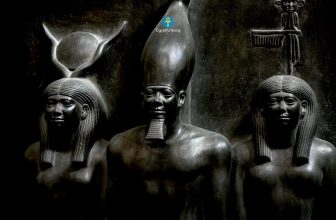Greco-Roman Period 332 BCE – 641 A.D.
Egypt became a part of the Hellenistic culture when Alexander the Great conquered Egypt in 332 BCE, and it was thereafter ruled by Ptolemy I, one of Alexander’s most important leaders. From the year 305 BCE, he declared Egypt an autonomous Ptolemaic state. Many cultural changes occurred during this time period when Alexandria was established as Egypt’s capital. It quickly became a global hub of science, culture, and the arts in the Mediterranean, thanks to its library and museum. The lighthouse of Alexandria, which was one of the ancient world’s seven wonders, and the reconstruction of the Egyptian temples of Philae, Edfu, and Dendara thrived.
Agriculture prospered economically, and advanced irrigation technologies such as water wheels and drums, as well as trade and manufacturing like weaving and papyrus, were known.
In Egypt, the Roman era was divided into two periods: the Roman Imperial period (30 BC – 330 AD) and the Byzantine period (30 BC – 330 AD) (330 – 641 AD). Egypt’s capital remained Alexandria, which was known for its theatres, gymnasiums, and public baths. The art of drawing and painting, particularly portraiture, has progressed dramatically. Egypt was transformed into a food storage and distribution hub for the countries of the Mediterranean.
Statues of Royales

When Egypt’s Ptolemaic kingdom was formed, Alexandrian art developed in a strictly classical manner. Then it was quickly combined with old Egyptian art and traditions. Ptolemaic kings’ statues were incorporated into Egyptian characteristics, along with aesthetic influences from ancient Greece. These two statues represent a Ptolemaic king and queen in a hybrid style that reflects the fusion of those two cultures.
Queen’s Statue – Greywacke / S.C.A. 2020 Excavations / King’s Statue / Black granite – unknown origin
Nedjemankh’s Coffin

Nedjemankh was an Ahnas priest of the deity “Heryshef.” His coffin, constructed of gold cartonnage with inlaid eyes and adorned with scenes and funeral chants from the Book of the Dead, is regarded as one of the Ptolemaic Period’s masterpieces of coffins.
Repatriated from New York’s Metropolitan Museum of Art / Ptolemaic Period (305 – 30 BCE) Stucco gilded
Zenon’s Papyri

Zenon oversaw the operations of “Apollonios,” Ptolemy II’s Minister of Finance, in the second century BCE. His archive is one of the most significant sources of information about Egypt’s economic and administrative conditions, including this series of papyri containing a variety of receipts and business contracts.
Ptolemy II’s Ptolemaic Period (285 – 246 BCE) Papyrus / Gerza
Douche Treasure

This treasure was discovered in 1989 inside a ceramic jar concealed inside the walls of a Roman fort in the town of Douche in Kharga Oasis. The treasure comprises a wreath adorned with the shape of deity Serapis, two bracelets, and two gold necklaces totaling 187 plates of fine pure gold.
2nd century AD / Roman Period / Gold
Pen-Menkh, Dendara’s Governor

Pen-Menkh lived during the reign of Queen Cleopatra VII and the invasion of Egypt by the Romans. He served as Mayor of Dendara, the capital of the 6th nome of Upper Egypt, as well as royal deputy and priest of Hathor and Horus. This statue is a one-of-a-kind synthesis of ancient Egyptian art with its long-established traditions and Hellenistic art.
1st Century BCE / Greco-Roman Period / Granite – Sandstone
Nilus, the god

The God Nilus was a symbol of the Nile river; this unique work portrays him as a man leaning on a hippo over a rock from which the water pours; he is flanked by a group of youngsters indicating the flood’s high level.
Period of the Romans / Qena / Marble








